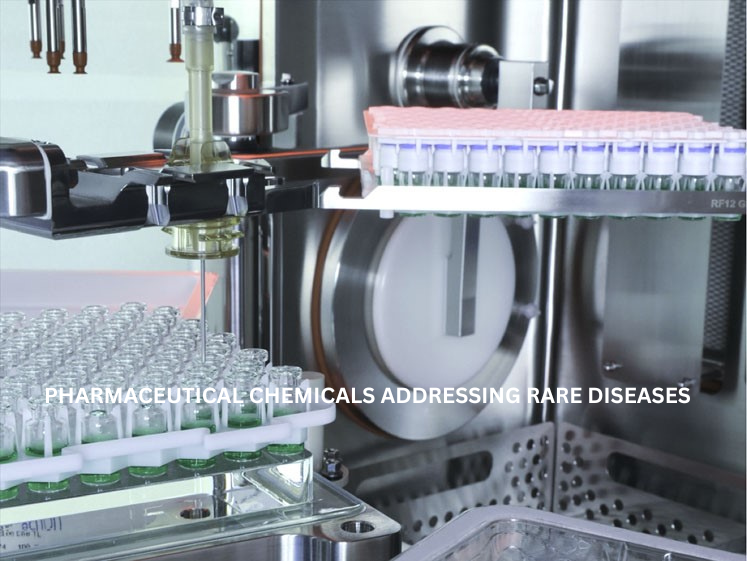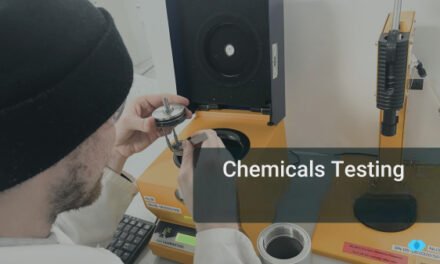Advanced pharmaceutical chemicals (APCs) are playing a transformative role in addressing rare diseases by enabling the development of targeted therapies, innovative drug delivery systems, and personalized medicine approaches. Rare diseases, also known as orphan diseases, affect a small percentage of the population, making their treatment challenging due to limited research, high costs, and small patient pools. APCs provide the tools and technologies needed to overcome these barriers. Here’s how:
1. Targeted Therapies
- Precision Medicine:
- APCs are used to create drugs that target specific molecular pathways or genetic mutations associated with rare diseases.
- Small Molecule Drugs:
- Advanced synthesis techniques allow for creating particular tiny molecules that bind to disease-causing proteins or enzymes.
- Example:
- Ivacaftor for cystic fibrosis targets a specific genetic mutation (G551D) in the CFTR gene, offering a personalized treatment option.
2. Biologics and Biopharmaceuticals
- Monoclonal Antibodies (mAbs):
- APCs are essential for the production of mAbs that bind to specific antigens involved in rare diseases.
- Gene and Cell Therapies:
- Chemicals like vectors (e.g., viral or lipid nanoparticles) are critical for delivering gene-editing tools such as CRISPR or siRNA to treat rare genetic disorders.
- Example:
- Zolgensma, a gene therapy for spinal muscular atrophy (SMA), uses advanced delivery systems to replace the defective SMN1 gene.
3. Enzyme Replacement Therapies (ERTs)
- Synthetic Enzymes:
- APCs enable the production of synthetic or recombinant enzymes to replace deficient enzymes in rare metabolic disorders.
- Example:
- Advanced chemical and biotechnological processes make ERTs for Gaucher’s disease (e.g., imiglucerase) and Fabry disease (e.g., agalsidase beta) possible.
4. Orphan Drug Development
- High-Purity Chemicals:
- APCs provide the high-purity raw materials needed for developing orphan drugs, ensuring safety and efficacy.
- Customized APIs:
- Advanced Active Pharmaceutical Ingredients (APIs) tailored for rare diseases enable the creation of specific, low-dose treatments.
- Example:
- Drugs like Spinraza (nusinersen) for SMA rely on complex synthesis and delivery mechanisms.
5. Innovative Drug Delivery Systems
- Nanotechnology:
- APCs are used in creating nanoparticles for targeted drug delivery, improving bioavailability and reducing side effects.
- Lipid-Based Carriers:
- Lipid nanoparticles (LNPs) facilitate the delivery of RNA-based therapies, essential for treating genetic rare diseases.
- Example:
- Onpattro (patisiran), the first RNA interference (RNAi) drug, treats hereditary transthyretin-mediated amyloidosis using lipid-based delivery.
6. Overcoming Drug Development Challenges
- High Cost of Development:
- APCs enable cost-effective synthesis and scalable manufacturing, reducing the financial burden of orphan drug development.
- Streamlined Production:
- Advanced chemical engineering and automation reduce production timelines for complex molecules.
- Regulatory Support:
- APCs are designed to meet stringent regulatory standards, facilitating faster approvals under orphan drug pathways.
7. Addressing Unmet Medical Needs
- Expanded Research Possibilities:
- APCs open avenues for studying rare diseases at the molecular level, leading to novel therapeutic approaches.
- Example:
- L-asparaginase, derived through advanced chemical processes, is used in treating acute lymphoblastic leukemia, which is rare in adults.
8. Supporting Rare Disease Diagnostics
- Diagnostic Agents:
- Advanced chemicals are used in biomarkers and contrast agents for early and precise diagnosis of rare diseases.
- Companion Diagnostics:
- Chemicals tailored for diagnostic tests ensure that therapies match the patient’s genetic or molecular profile.
9. Enabling Personalized Medicine
- Custom Therapeutics:
- APCs facilitate the production of individualized therapies based on a patient’s genetic makeup.
- Example:
- CAR-T cell therapies, where a patient’s T cells are modified with APCs to target specific cancer or disease antigens.
10. Accelerating Research and Development
- Chemical Libraries:
- APCs are used to create vast libraries of compounds for high-throughput screening, accelerating the discovery of drug candidates.
- Prodrug Development:
- APCs enable the design of prodrugs activated in the body, improving the efficacy and safety of treatments.
Case Studies
- Spinraza (Nusinersen):
- Treats spinal muscular atrophy by modulating SMN2 gene expression; developed using advanced nucleic acid chemistry.
- Kalydeco (Ivacaftor):
- A small molecule that restores the function of the CFTR protein in cystic fibrosis patients with specific mutations.
Challenges and Future Directions
- Challenges:
- High cost of R&D and manufacturing for small patient populations.
- Difficulty in conducting clinical trials due to limited patient numbers.
- Future Directions:
- Increased use of AI and machine learning to optimize APC design for rare diseases.
- Continued collaboration between academia, industry, and regulatory bodies to accelerate innovation.
Conclusion
Advanced pharmaceutical chemicals are revolutionizing the treatment of rare diseases by enabling the development of particular, effective, and innovative therapies. With continued advancements in chemical synthesis, biotechnology, and delivery systems, APCs will play an increasingly vital role in addressing the unmet needs of rare disease patients, paving the way for personalized and targeted medical solutions.
Hashtags
#RareDiseaseSolutions #OrphanDrugs #RareDiseaseResearch #PharmaForRareDiseases #InnovatingForRare #AdvancedPharmaceuticalChemicals#AdvancedPharmaceuticals #SpecialtyAPIs #ChemicalInnovation #PharmaInnovation #NextGenPharma #DrugDiscovery #RareDiseaseResearch #TargetedTherapies #PharmaR&D #PrecisionMedicine #ScienceAndResearch#HopeForRare #RareDiseaseAwareness #PatientFirst #TransformingLives #RareDiseaseCare #PatientCentricFocus #PharmaCollaboration #IndustryForRareDiseases #ChemicalBreakthroughs #PharmaPartnerships #InnovativeChemicals #IndustryAndCollaboration

















